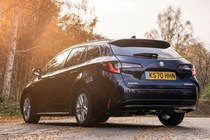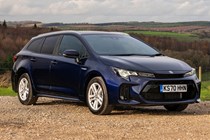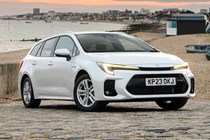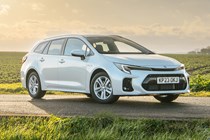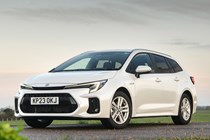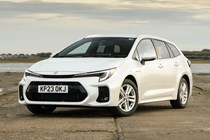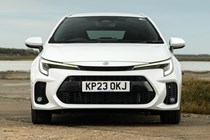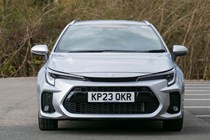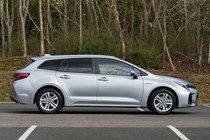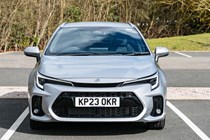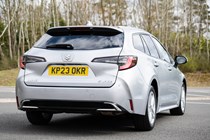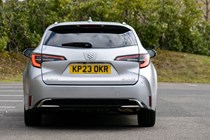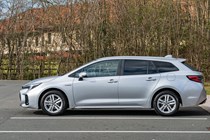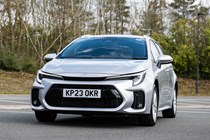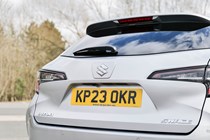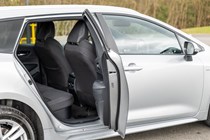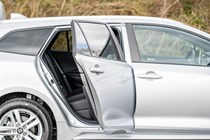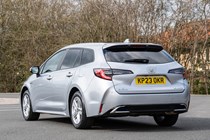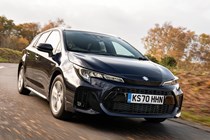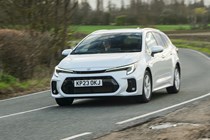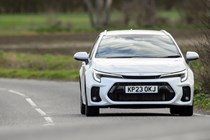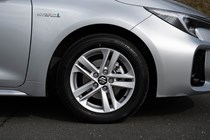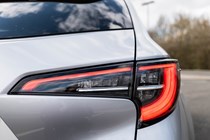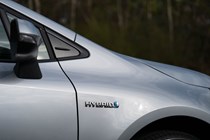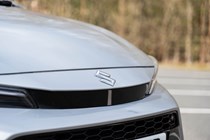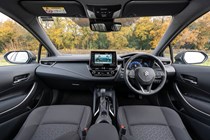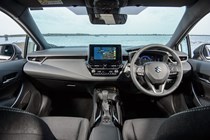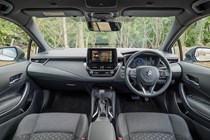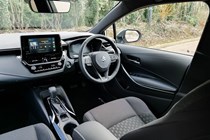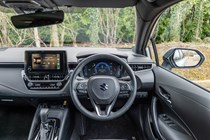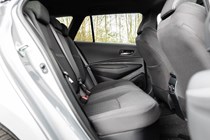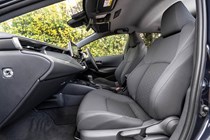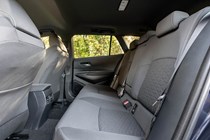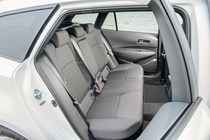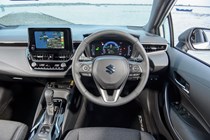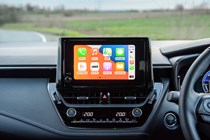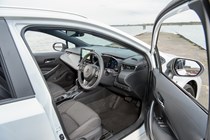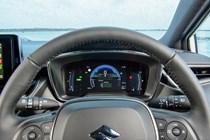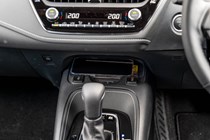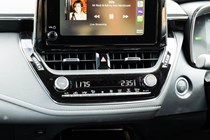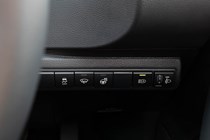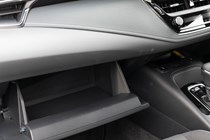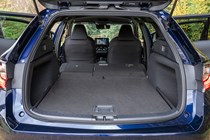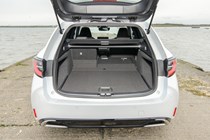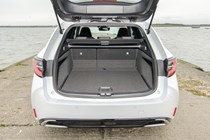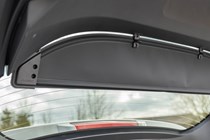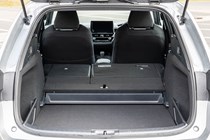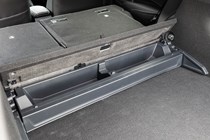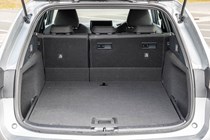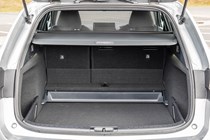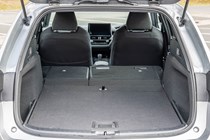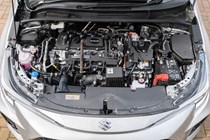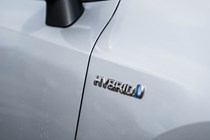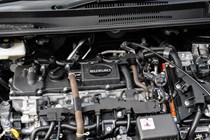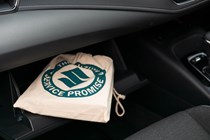Suzuki Swace long-term test
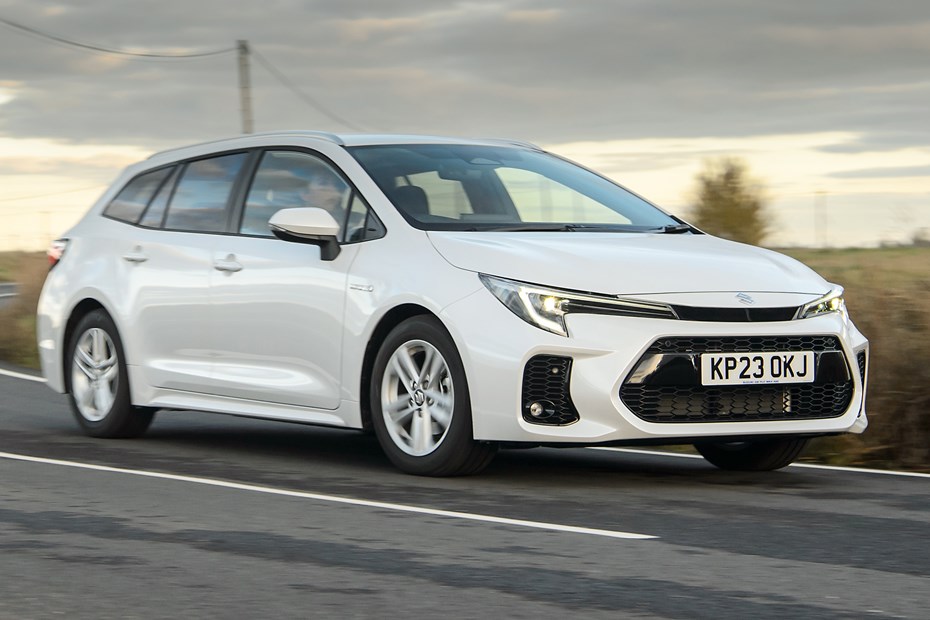
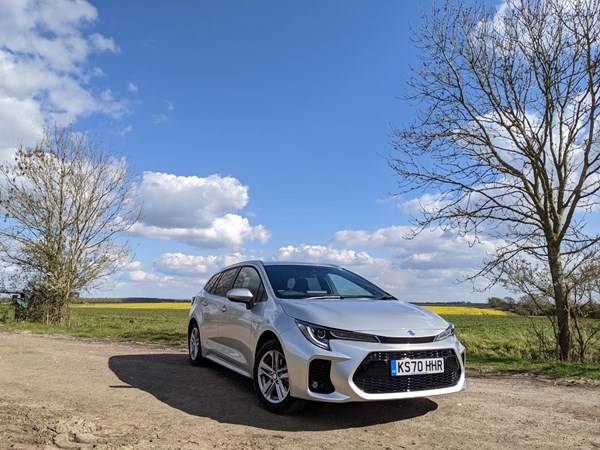
How can this left-field Suzuki estate measure up as a modern mid-sized family car, and why should you buy one over its almost identical twin, the Toyota Corolla Touring Sports? We spent half a year finding out.
This 2021 long-term test covers the pre-facelift, 120hp Suzuki Swace SZ5. For details of the 2023 140hp facelift, check out the full Suzuki Swace review.
Jump to:
Reports by Gareth Evans
Update 1: Welcome
Introducing the Suzuki Swace SZ5
I’m not going to beat around the bush here: this is going to be a curious long-term test. The car you’re looking at has an identity problem.
You see, underneath it’s actually a Corolla Touring Sports, built at Toyota’s factory in Derbyshire. The Swace is the product of a partnership between the two companies that also yielded the Suzuki Across and latest RAV4, which are also nearly identical.
The problem for the Swace is that Toyota’s dealer network is far larger, and while we’ve always had exceptional service at Suzuki’s, the Toyota/Lexus reputation for customer service is the envy of every other mainstream car maker.
Furthermore, even if you do have a Suzuki dealer nearby, the Corolla’s range offers two engine options to the Swace’s one. You can also order a hatchback version of the Corolla, while the Swace is estate only. There’s not even a compelling financial reason to buy one, because the Suzuki is more expensive than the Toyota spec for spec, and neither can match an equivalently appointed Skoda Octavia Estate with its significantly bigger boot – it measures 640 litres to the Swace’s 596. There are only two trim levels with the Suzuki, too.
Other impressive rivals come in the form of estate versions of the Ford Focus, VW Golf, Vauxhall Astra and also the vast range of popular mid-size SUVs like the Nissan Qashqai and Kia’s Sportage.
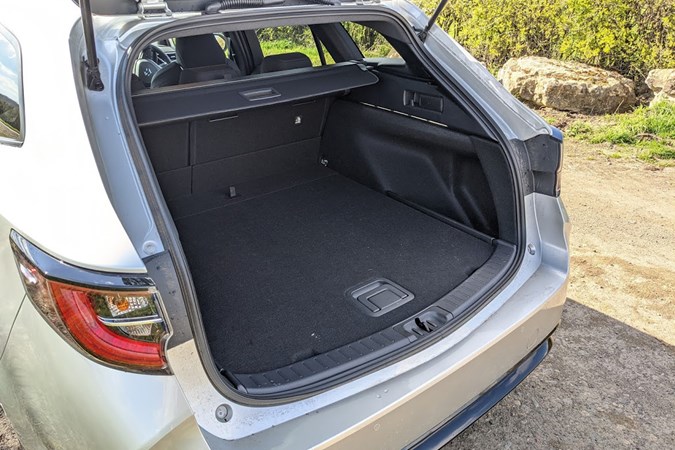
Practicalities out of the way, then, why buy one? Well, to this writer’s eyes at least, the Swace looks better than the Corolla. It’s the latter’s front end that does it for me: those sleek, futuristic-looking headlights seem to work better with the Suzuki face than the more plasticky Toyota.
Underneath the similarities are still obvious: the 1.8-litre hybrid powertrain has been developed by Toyota for decades, first appearing in the Prius in 1995 and now capable of eye-opening fuel economy and 99g/km CO2 emissions that slot the Swace/Corolla twins into a low company car band. You don’t get the option of the more powerful 2.0-litre unit in the Corolla’s line-up.
The Swace is based on Toyota’s TNGA platform, which we first tried in the C-HR SUV, meaning it’s way better to drive than you may expect, too. The steering is direct, the handling stable and approachable, and the cabin’s so quiet you can have a conversation at a whisper at 60mph.
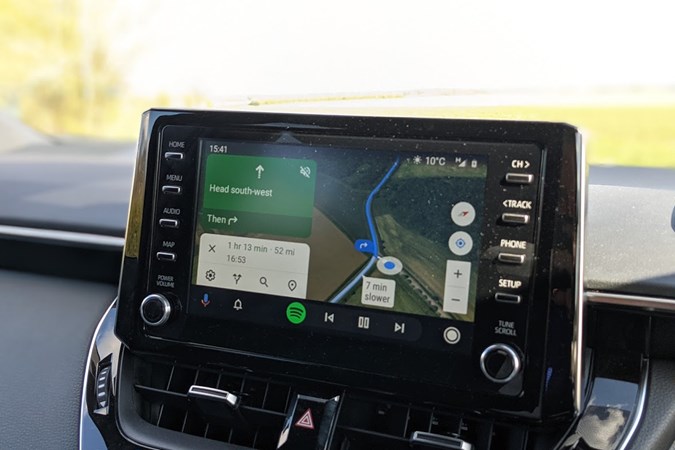
And there’s no arguing with the amount of kit on offer. For your £29,299 on-the-road you may expect a range of useful accessories, but the Swace in SZ5 spec has nearly everything you could ever want. Wireless smartphone charging, heated front seats and steering wheel, self-parking, all the latest driver-assistance systems, and of course Android Auto and Apple CarPlay to provide all the multimedia entertainment you could ask for, displayed on a 7.0-inch touchscreen in the cabin.
However there are a few oddities here and there. First and foremost, that multimedia system doesn’t have sat-nav built in, meaning you need to use a smartphone connected via a USB cable in order to have a mapping function. That begs the question: why bother with the wireless charging?
It won’t work when the phone’s plugged in, so you’ll only use it when you’re not using CarPlay or Android Auto, but we use these systems all the time as they’re vastly more feature-rich than most manufacturers’ multimedia offerings. Wireless connectivity is the solution here, but sadly not offered by either Apple or Google at time of writing. The only optional extra here is the £600 silver paintjob.
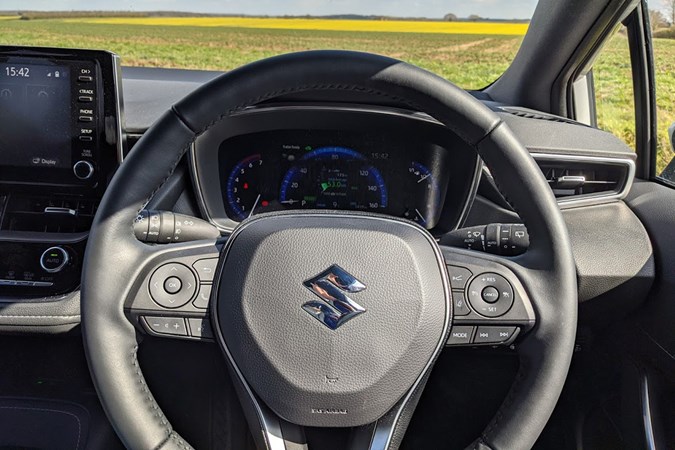
One thing I’m very glad to report about the Swace that really does endear it to me ahead of other firms’ cars is the way the controls are set out. There are dozens of physical buttons for things, rather than relying on the touchscreen to change settings such as heating or air-con. It means you can keep your eyes on the road and feel your way around the cabin to the buttons or knobs you’re after.
I’m also expecting impressive things from both the way this car drives, and potentially its fuel economy. The 1.8 petrol engine with its 53kW electric motor has a peak power output of 122hp, which isn’t going to set my trousers on fire, but my suspicion is that the claimed average fuel economy of 64.2mpg will be achievable, and that’ll mean it has a range of over 600 miles per tank. Fewer trips to filling stations can only be a good thing, can’t it?
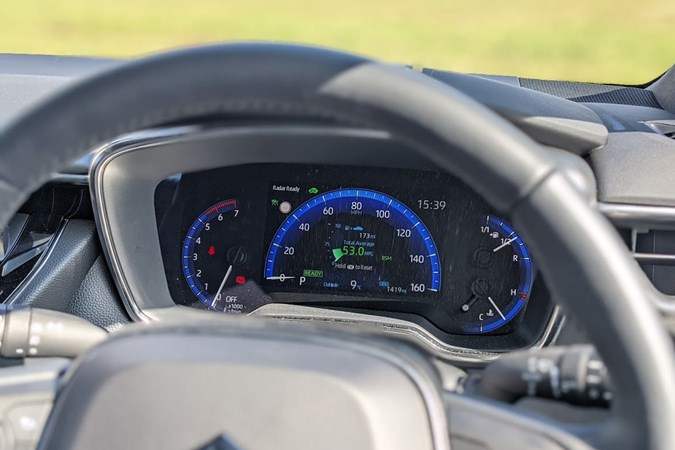
It’ll be interesting to see how often the car runs on electricity rather than petrol in order to do that. The official range of the tiny 3.6Ah battery is around nine miles, which isn’t a lot nowadays, but Suzuki (and Toyota) will tell you that’s not the whole story. It’s about how the car manages its power delivery between petrol and electric that should provide the results I’m after. Getting 60mpg+ from a car of this size previously meant you had to have a diesel, and I really didn’t want to go back down that road again if I didn’t have to.
So, it’s with a healthy dose of cynicism I begin half a year living with this curious Suzuki. Will it win me over with charm and capability, or will it be six months to forget? Stay tuned to find out…
Update 2: The exploration of Swace

Gareth’s been getting some surprising first impressions from Suzuki’s mid-sized estate
I mentioned in my previous update that the Swace has an identical twin in the form of the Toyota Corolla Touring Sports, but let’s forget about that for a moment and focus in on the Suzuki. What’s it like in isolation, as a practical family estate?
My first impressions are excellent. Starting at the back, being an estate you’d expect it to be practical, and indeed it is. There’s a useful 596 litres of load room back there, and if you’re struggling to visualise what that looks like, let me help:
As you can see, in my house we’re keen gardeners, so not only is it great to be able to lay down bags of compost and similar flat on the boot floor, but there are small cubbies either side that’ll hold smaller items like potted plants without risking covering the whole luggage area in soil.
Impressive boot practicality
I haven’t yet found cause to fold the back seats down to liberate the full 1232 litres of loadspace, but I can tell you there’s a bed move written in my stars over the coming months. It’ll be good to push the practicality further still.
And anyway, those rear seats are going to come in handy now that lockdowns are starting to lift and I’m starting to see family and friends again. It’s a little dark back there, so I wonder if smaller children would be comfortable, but then I don’t have any so that’s probably not a concern.
Something that’s definitely going to be getting a lot of use is the driver’s seat, though. I’ve got a few trips planned to assess its long-range cruising ability, but the moment I sat in the Swace it was obvious this is a comfy car.
This is one solid-sounding Suzuki Swace!
In fact it was seconds before I sat down, because swinging the door open I was startled by how much it weighs. Immediately it made me think of BMWs and how robust they feel – that perceived quality goes a long way if you ask me.
Closing said door once I’d plonked on my perch made a lovely noise: the sort of thud that screams solidity. Thumbing the starter button, the dash lit up like Blackpool at night but there’s something missing. I can’t hear anything.
That’s because it was running on electric power from the batteries, rather than petrol, so it’s almost silent. Even as you pull away from a standstill it’s eerily devoid of din, and it’s only when that 1.8 petrol engine kicks in that you hear some more familiar sounds. Give the accelerator a good prod and it starts sounding slightly strained, but then this isn’t a fast car and I don’t find myself demanding too much of it.
In fact, driving slowly is where the fun’s at, if you ask me. I quite enjoy a game of ‘beat the best fuel economy’ nowadays because a) I’m getting old, and b) it’s nearly impossible to enjoy one’s self driving on the public highway without attracting the wrong sort of attention.
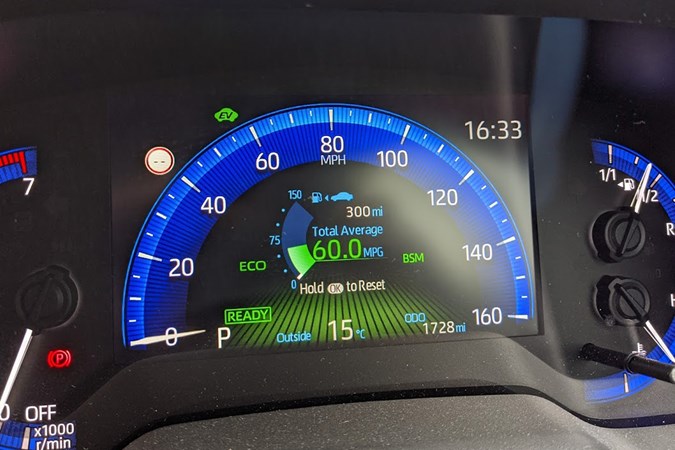
So it’s better safe and slow than sorry for me, and the Swace absolutely loves it. As the engine runs in and loosens up, I’ve seen over 60mpg on the trip computer with relative ease. I’ve had to change my driving style to suit a hybrid car, though, so don’t expect the same results unless you do too.
Chiefly that means thinking ahead more; using electrical power where possible; and accelerating and braking less. Momentum is the key, so I leave large gaps ahead of me, providing more deceleration distance and using the brakes less often. If you do that, you won’t need to accelerate as much or for as long, so you save fuel.
The batteries regenerate when you’re slowing down, which means any time you do you you’re also gaining fuel economy. This feature also slows you down more than a conventional petrol car, meaning the brakes should be used less often.
All of this will keep topping up the batteries, so while the actual range of the battery is a disappointing-sounding nine miles or so, in real-world situations this doesn’t matter because it’ll never run out for long. It’s up to you to drive the car in a manner that gets you the most battery power if you want to save petrol…
Still, suffice to say I’m pleased with my first few weeks in the Swace and hope it continues to impress as the miles rack up.
Update 3: Swace’s final frontier – the motorway
A holiday meant Gareth had a chance to assess the Suzuki’s long-distance touring ability
It’s been a while coming, but June marked the month I finally got to take the Swace on an extended run to test its mettle as a long-distance tourer.
The trip took the form of a sailing holiday, which clearly the car wasn’t specifically part of, but in order to get there I’d drive from my place in Northamptonshire down to my parents’ in Hampshire, and then along the south west coast to Plymouth.
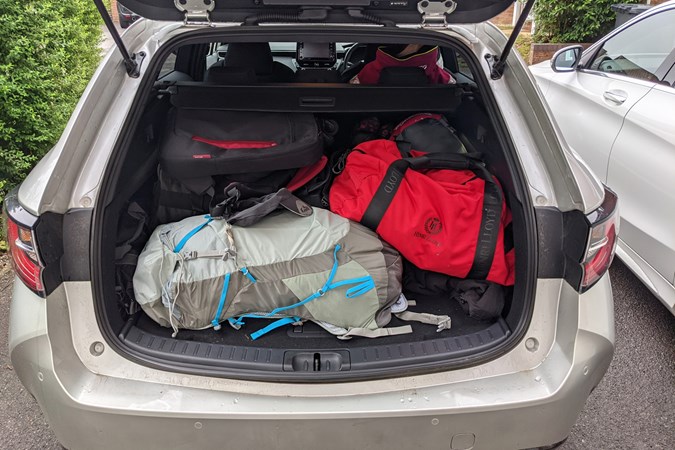
After five days sailing I’d hop off the boat, into the car and on to a hotel in Devon, before making the long schlep back to Northants and home. It was another ample test of this estate’s 596-litre boot, too, but Swace swallowed it all.
All in all, that’s a decent 560 miles to assess what the Suzuki is like in an environment I’ve gladly avoided nearly completely since lockdown began: the motorway.
It started with a reminder of once of this car’s talents – prod the starter button, crawl away from a standstill and reach 30mph in near silence. It’s so quiet and peaceful inside the Swace that it sets you up well for a long jaunt.

Moving off my local rural routes and on to larger arterial roads, we soon settled into a rhythm and I took this opportunity to explore the driver-assistance technology on hand. I’d been using cruise control so occasionally that I had to remind myself where abouts on the steering wheel the activation button was, but once I’d worked out where my right thumb needed to go, I set the car to 70mph and let it do its thing.
You’re able to adjust the distance the car keeps you from the vehicle in front using another of the steering wheel’s myriad controls, which got me thinking that there’s a huge amount of physical controls in the Swace’s cabin: something that’s becoming increasingly unusual in this era of touchscreen-controlled everything.
Still, I settled on the setting that held me closest to other road users, because that still meant a safe gap, but also that people wouldn’t force their way in between quite so often. At longer distances this is a problem, not because of how the car is configured, but because of how other drivers’ brains are. People just don’t leave enough room.
Once I’d got my head around this, it was time to let the car take even more of the strain and activate the steering assistance. This gently steers for you if Swace detects you’re leaving your lane.
Or rather, where it thinks you should be within your lane. Which being completely honest, is wrong. The Swace – like Volvo’s Pilot Assist system used to do when newly released on an unsuspecting public – holds you too far over to the left-hand side of a lane for my liking.
Well, not my liking as much as my passenger’s, because when you’re in lane two of the motorway you feel like you’re getting perilously close to slower-moving traffic you’re overtaking. It didn’t take long for me to switch this off altogether, only to reengage it when crawling in one of the jams we found ourselves tangled up in.
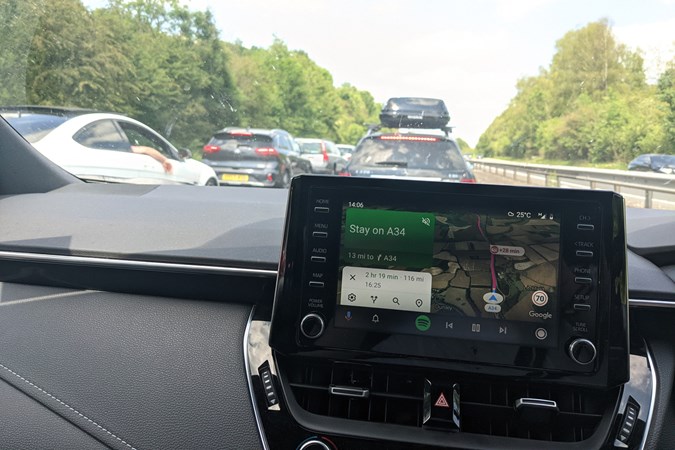
It works so much better at low speeds, you see. From 0-50mph it’s great, positioning you perfectly and taking the strain out of such arduous driving. The only thing it doesn’t like is accelerating off from a standstill unassisted: you need to prod the accelerator pedal or cruise control speed adjustment in order to get moving again. This soon becomes second nature, and the whole experience a lot less effort to boot.
One thing I did note on this trip was my fuel economy creeping downwards when spending decent time at motorway speeds. It settled at 53mpg or thereabouts, whereas on my rural roads near home I’m seeing closer to 60mpg. That difference works out to around 66 miles of extra range, which isn’t to be sniffed at.
The reason for this will be aerodynamic, of course, because wind resistance rises exponentially as you accelerate, so the faster you go, the more air needs pushing out of the way for you to make progress.
But I’m still impressed at 53mpg, and would be happy with that in an equivalent diesel car. Suffice to say the Swace did an admirable job of my journey in a south-westerly direction and back again. I’m now trying to think about my next long trip, and whether there’s anything I can do to mitigate that fuel consumption drop-off…
Update 4: Better Swace than sorry
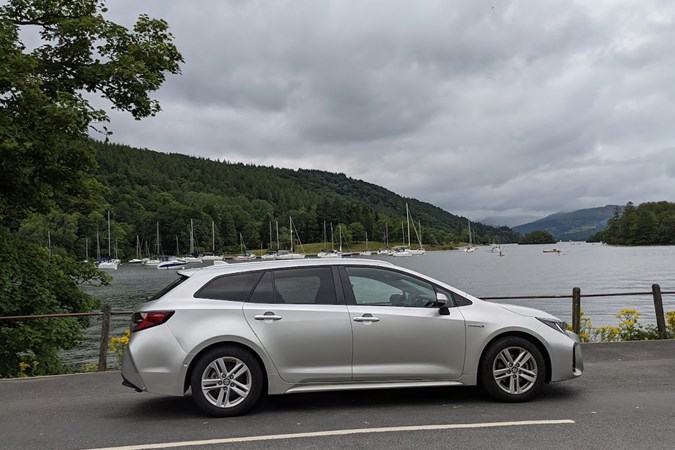
Gareth’s finding loads he loves about the Swace, and a few things he doesn’t…
I’ve been putting the Swace through a few trials recently to test its mettle in various ways.
Last week a generous neighbour in the next village along offered a bookcase for free so long as somebody could come and collect it, so I got the tape measure out and worked out the six-foot-tall wooden unit would just about fit into the Suzuki. The challenge was set.
Before leaving to collect, I had to get the back seats folded away to unlock the full load area. This is as easy as pulling a lever on each side of the 60:40-split rear bench, but the bar containing the boot cover needs removing separately via a button on each side of the car.
The process took 30 seconds with no preparation at all, and I’m thrilled to report the bookcase slotted right in there once I’d moved my seat forward a touch. Nice and simple, in the end.
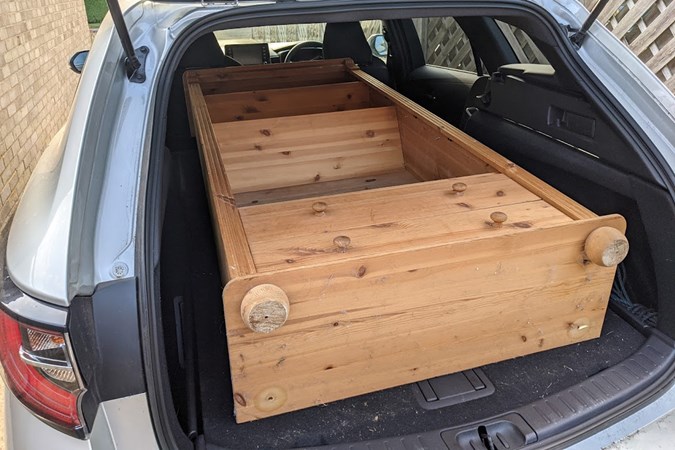
Next was a chance for a far more rigorous test: a dash to the Lake District with my Wife to visit some family. Having already driven to Devon in a previous update, I knew the Swace was a capable cruiser, so I was looking forward to the journey.
That enthusiasm waned somewhat when it turned out the M6 was going to be doing its best impression of a car park for the entire drive, adding more than 50% to my estimated route duration and meaning a solid 6.5 hours behind the wheel.
I’ve settled into a routine with this car now on longer trips. I don’t like using the adaptive cruise control during normal driving because I’m worried it’ll make me complacent and prevent me from reacting properly in the event of an emergency. Sure, this is an issue with the soft thing behind the ‘wheel rather than with the car itself, but still I’d rather stay in control.

Crawling in traffic, though? Adaptive cruise every time. It takes the strain right out of low-speed stopping and starting. It won’t do everything itself – you have to push the accelerator or thumb the speed control on the steering wheel to set off again from a standstill – but I let the car take care of the maintaining a safe distance from the vehicle in front. This has a big impact on my tiredness after a long jaunt, in my experience.
Still, once we’d got the initial drive over and done with, I was ready for a relaxed evening. Next day we headed to Coniston to go to see Donald Campbell’s ill-fated Bluebird K7, the remains of which sit in a museum after being pulled from the bottom of the lake following Campbell’s fatal accident while trying to set a new speed record.
This necessitated a brilliant route over narrow, undulating Lakes roads which highlighted a fact I find a little amusing about the Swace: it’s actually, despite being a sensible-looking family estate, surprisingly entertaining to drive.
The steering is what does it. It’s beautifully weighted and pin-sharp, which makes you really feel a part of what’s going on. Chunky tyres mean there’s a bit of bodyroll to contend with, but I don’t mind that as much as my passengers do.
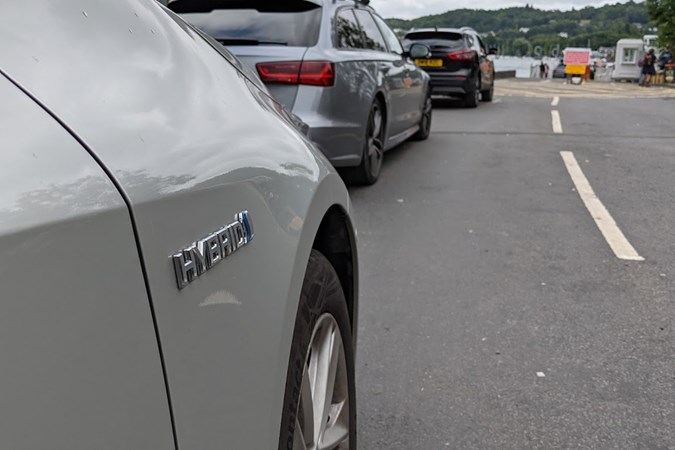
It’s a shame in this sense that the engine doesn’t sound more interesting. It’s fair to say a prolonged push of the right pedal makes for a more bovine din than anything else, and since it has no gears to ‘step’ up and down, it quickly becomes unpalatable.
However, I’ll forgive the Swace that, because said engine is also doing really impressive fuel economy, and one of the things I love most about this car is how quiet it can be when you don’t strain the hybrid powertrain. You can’t have your cake and eat it.
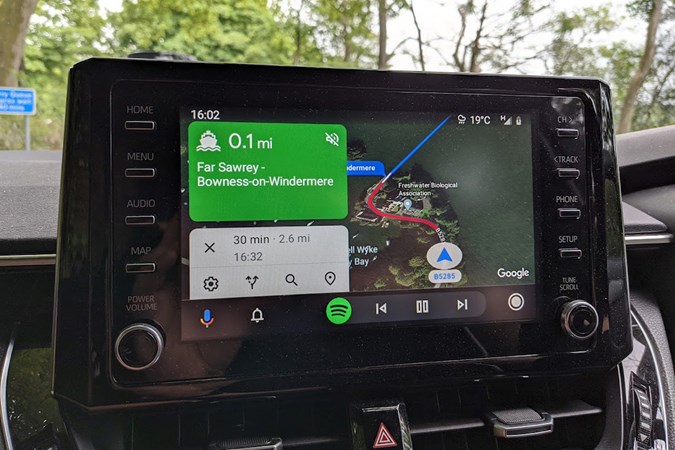
I’ve sung the praises of Android Auto in the past in these updates, and it remains a godsend for longer trips, but I’m beginning to think the USB socket could be in a better place. It’s by the right knee of the front passenger, and often gets knocked, which thanks to poor-quality cables can cut the connection to the phone. It then becomes difficult to get it to reengage with the system, often meaning I need to reboot the whole car before it’ll work again.
There’s another USB in the storage box between the seats, but this doesn’t have a data connection so can’t be used for this purpose. That, plus the lack of built-in sat-nav, does put you at the mercy of your passenger’s ability to sit perfectly still. Yes, that’s right: six and a half hours. It’s a tall order.
Update 5: Necessary Niggles
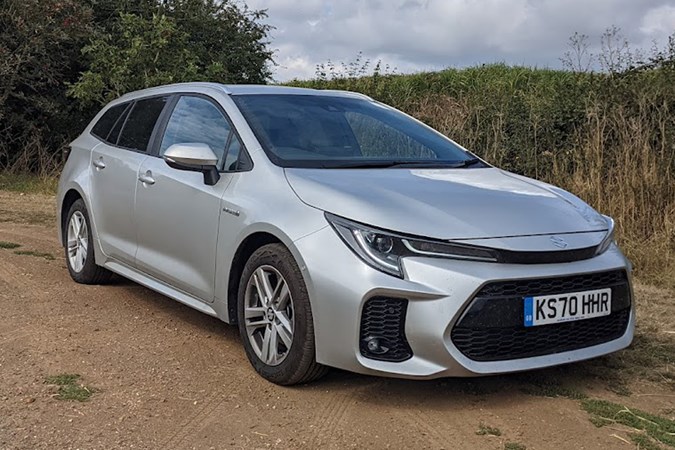
My time’s running out with the Suzuki Swace, and overall I’ve been extremely happy with it, but like every other car on sale, it’s not perfect. Admittedly it came close in some respects, though!
In this article I’ll take you through some of my bugbears, and explain the factors at play. Spoiler alert: many stem not from this car being a Suzuki, but actually as a product of sharing a platform with the Toyota Corolla Touring Sports, which is built at the same factory in Derbyshire.
1) Irritating infotainment – the touchscreen in the Swace can display Android Auto, which is great news. However, that means it needs plugging in with a cable, thus rendering the otherwise-handy wireless charging pad redundant. Wireless tech is on the way for this, but it’s trickling onto the market rather than pouring.
2) Irritating infotainment pt 2 – there’s no built-in navigation. This forces you to either use your phone with Android Auto or Apple CarPlay, or buy a handheld unit. It’s a common quirk with Toyotas nowadays. Presumably the bean-counters have decided it’s not worth the extra cost.

3) Lifeless engine clashes with sporty handling – it’s not that the Swace lacks entertainment, it’s more that the exceptional body control, supportive seating, and steering feel incongruous when coupled with a hybrid engine that’s at its best at very low loads. You can barely hear the powertrain for the majority of the time, and this serenity is an odd partner for a nimble machine eager to change direction.
4) There’s no sporty version. Related to the above comment, but I’d like to see Suzuki embrace the Swace’s pace in corners and produce a ‘Sport’ version like the Swift. Toyota did it with the GR Corolla, so why not? Spoiler alert: it needs a bigger spoiler.
5) It’s too expensive to buy compared with rivals. Suzuki has recently mitigated this somewhat by offering a £3k contribution to your car’s price, but you’re getting two years’ less warranty and half the number of dealers than Toyota offers. It starts to make up for it in fuel and tax savings, however, and monthly costs for private or fleet drivers on PCP or lease deals do make much more sense. But a Skoda Octavia Estate is compelling enough for a variety of reasons that see it close to the top of the class in this sector of the market.
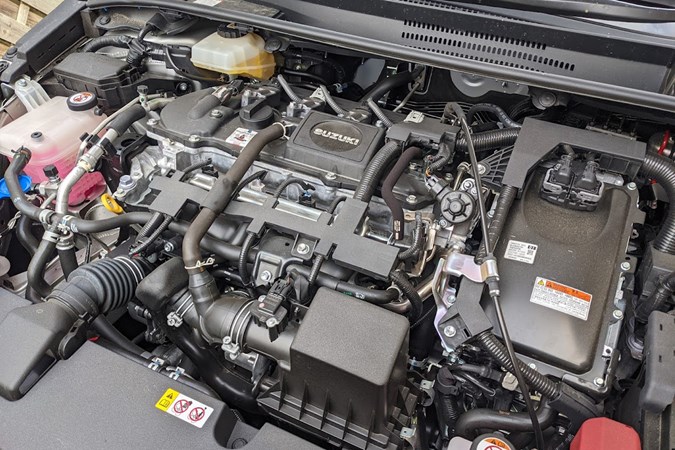
6) The rear is too dark. Tints on the back windows don’t help, but I had a few comments about passengers feeling cramped. In fact there’s plenty of room back there when you look, but it’s that perception that’s tough to shift.
You’ll notice a theme in these critical comments: none are what I’d class as a show-stopper, and none would stop me buying one. The reality is that the Swace has been a reliable, practical workhorse that I’m going to be sad to see the back of.
But alas, next time around I’ll be waving goodbye. Neither of us are happy about it, as you’ll find out…
Update 6: Goodbye
A fond farewell to the Suzuki Swace

I was very reluctant to hand the key to the Swace back after my six months behind the wheel. It’s been a brilliant companion and I could quite imagine wanting or needing no other car for several years to come.
I’ve waxed lyrical about this Suzuki’s capabilities at considerable length, and only found the most minor of bugbears to report on – the main being the odd multimedia setup, with its wireless charging seeming a little incongruous considering you need to plug your phone in via USB to use navigation via Android Auto or Apple CarPlay.
And that’s it. The culmination of half a year of ruthless interrogation of the Swace’s capabilities and I’ve come up with a single thing I don’t like. And it’s not even the end of the world, as I learnt to live with it easily enough.
On a more positive note, the Swace benefits from being built alongside the nearly identical Corolla Touring Sports at Toyota’s factory in Derbyshire, so it drives as well as most cars in its class. Not only does it handle well, but the suspension is exceptionally comfortable and the cabin seriously quiet – particularly when in EV mode and not using the 1.8-litre petrol motor.

This refinement, as motoring journalists tend to call it, was highlighted on my longest jaunt to Devon, where the car was basically the perfect partner. It’s not silent from the outside, though – to avoid pedestrians being unable to hear it, there’s a synthetic noise that emits from the car at low speeds when on electric power.
Suzuki has readjusted the spec and pricing since I took delivery, and it’s now better value than the Toyota trim-for-trim, which sweetens the deal a little when you consider Toyota has more dealerships and a longer warranty to recommend it.
But I prefer the way the Swace looks, too. Its front end is less plasticky and in this silver shade I think it cuts quite a dash.
Moving to the inside, the front seats are just wonderful. They’re thick, but seriously cossetting and supportive when cornering quickly. Since I had the car over summer, I didn’t get much use from their heating function, or indeed the heated steering wheel, but I’m sure I’d have been glad of them if I still had it now in November.
I made great use of the large (but not class-leading) luggage area behind the back seats numerous times, and even squeezed a large bookcase in there once the rear bench was folded away.

But the thing that I liked the most was the running costs the Swace is capable of. That aforementioned hybrid setup is remarkably effective, and on the roads around here I found it easy to stray upwards of 55mpg during normal driving. A little concentration and 60mpg was possible, with an associated range of around 600 miles per tank.
In a world where plug-in car drivers are still suffering with a poor-quality charging infrastructure and subsequent range anxiety, I feel like the peace of mind offered by a regular hybrid (i.e. one that self-charges rather than plugging in) like the Swace is not to be sniffed at.
So, in conclusion, it’s a fond farewell to this faithful family vehicle. I’ll miss its versatility, its frugal drivetrain and most of all, its ability to show a clean pair of heels to several of its rivals in the handling stakes, despite boasting nothing sporty whatsoever in any other aspect. It’s the sign of a great platform – a statement evidenced by the other cars built on the same underpinnings: the C-HR, the Prius and the Lexus UX.
| 2021 Suzuki Swace SZ5 (120hp) |
|
| Current mileage | 7,788 |
| Real-world average fuel economy | 56.6mpg average |
| Official combined fuel economy (WLTP figures) | 64.2mpg |
| Parkers ‘MPP’ (Miles Per Pound) calculation | 9.2 - 9.4 |
| Car joined Parkers fleet | April 2021 |



